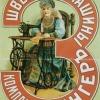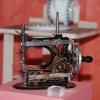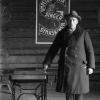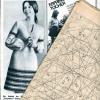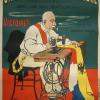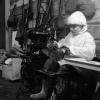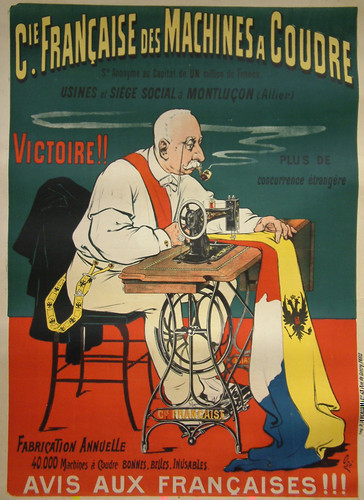This is men's work
While sewing machines are usually associated with women, they have also have also been a key tool for various groups of men over the last 150 years. The use of the machine in wartime has meant that soldiers used them, not to mention groups such as monks, ships' crews, and prisoners. Men also often did home manufacturing using sewing machines.
As early as 1860, the New York Times called a sewing machine the “best boon to woman in the nineteenth century,” while many advertising campaigns in Europe at the time were aimed at men. One of the first French manufacturers of machines distributed a brochure depicting a soldier sewing at a machine. Although later the women were addressed as the most likely users, the "sewing man" did not entirely vanish from public view.
In France, the sewing man was a Prussian or Jewish tailor, and was not always meant to be an appealing image. While the former portrayed an actual enemy during the war of 1870, the latter personified a fear of men’s competition in woman’s trades and was an undisguised sign of anti-Semitism.
 Previous Story
Next Story
Previous Story
Next Story
How to cite this page
Slawomir Lotysz, 'This is men's work', Inventing Europe, http://www.inventingeurope.eu/story/this-is-mens-work
Sources
- "The Story of the Sewing-Machine; Its Invention Improvements Social, Industrial and Commercial Importance." New York Times, January 7, 1860. http://www.nytimes.com/1860/01/07/news/story-sewing-machine-its-invention-improvements-social-industrial-commercial.html?pagewanted=all
- Coffin, Judith G. "Credit, Consumption, and Images of Women's Desires: Selling the Sewing Machine in Late Nineteenth-Century France." French Historical Studies 18, no. 3 (Spring, 1994): 749-783.
- Davies, Robert B. Peacefully Working to Conquer the World: Singer Sewing Machines in Foreign Markets, 1854-1920. New York: Arno Press, 1976.





